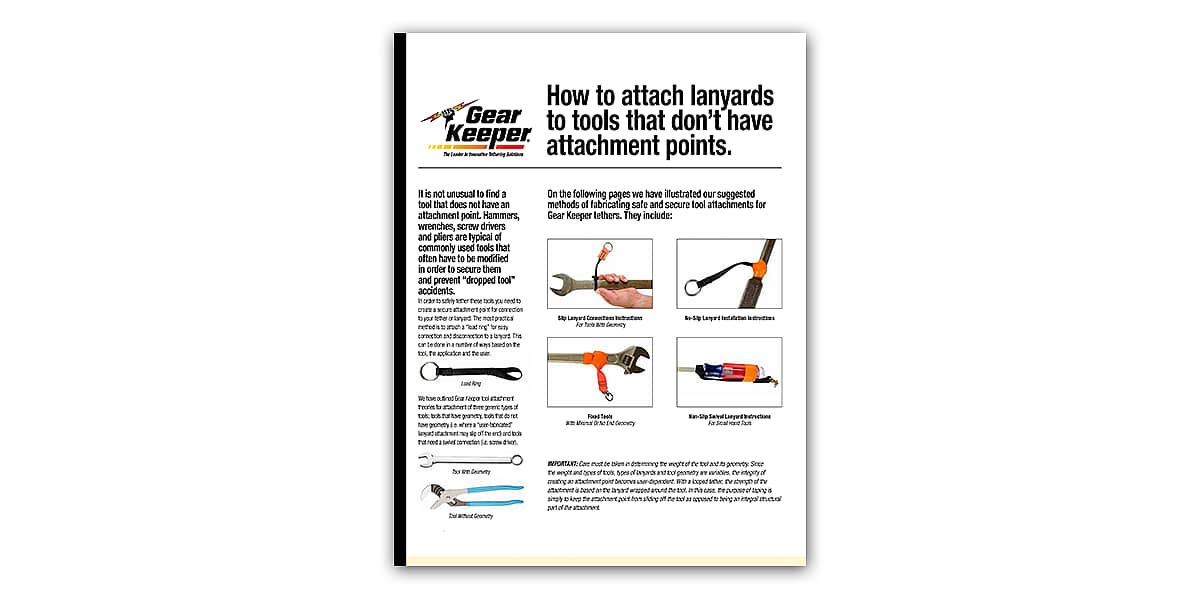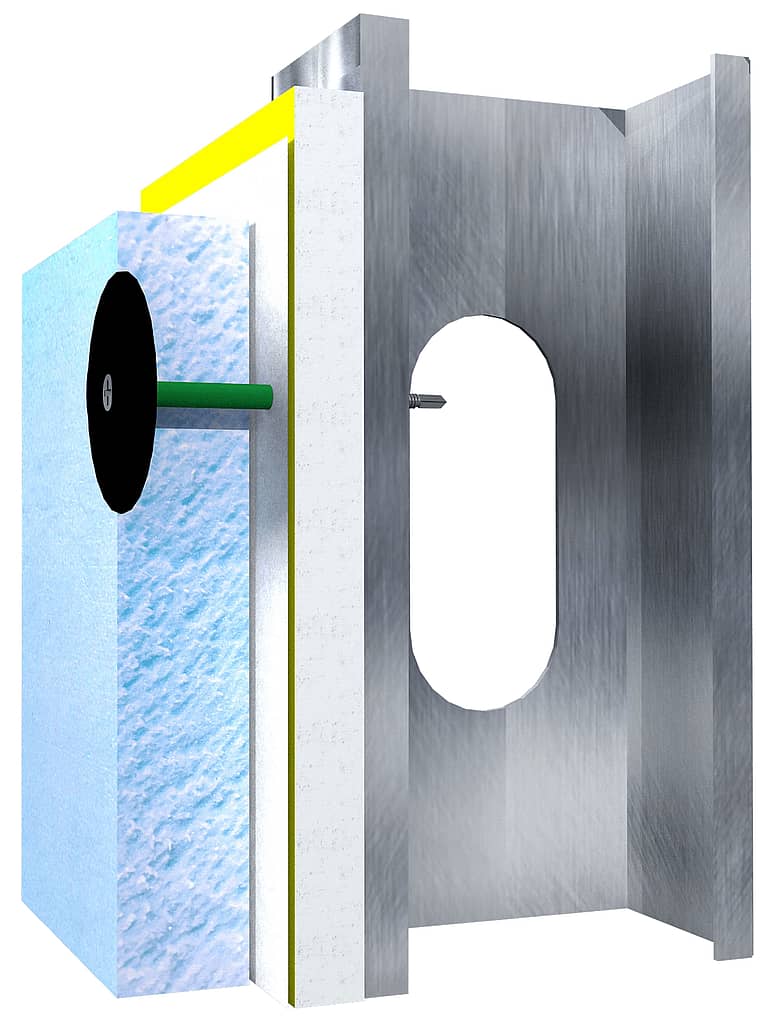Even small tools that are dropped from above are serious safety hazards. When working at heights, some of the most commonly used tools that don’t have attachment points are often improperly secured and need to be tethered. The new literature from Gear Keeper offers simple and convenient tethering solutions that will safely secure a tool while still retaining the benefit of extending and retracting the tool as needed.
The illustrated “how to” reference is included in the company’s free 16-page “Safety Engineer’s Guide to Tool Tethering.” The multipage section titled “How to attach lanyards to tools that don’t have attachment points” contains over 50 demonstration photos. They illustrate the guide’s tool attachment how-to theories such as swivel connection tools, slip vs. non-slip connections and attaching tools with minimal geometry in a step-by-step presentation. There is also a section covering non-slip, swivel connections for small hand tools that solves the problem of tethering commonly used tools such as screw drivers, pliers, hammers and others that lack the necessary geometry or don’t have built-in attachment points required for tethering.
Covered in the guide are workplace considerations such as tethers for working in confined quarters or climbing; tethers that allow for quick interchangeability of tools, and tethers designed to anchor a heavy tool to a structure instead of a person. Even tethers for other common workplace objects such as hard hats, security cards, cell phones and more are covered in the guide.





